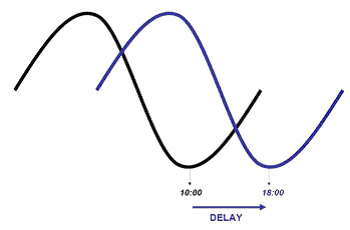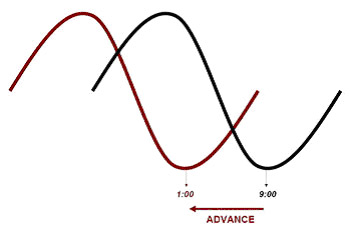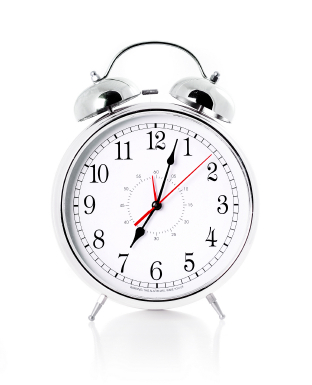Where is the clock responsable for sleep and circadian rhythms?
The main circadian clock is located deep in the brain in an area of the hypothalamus that contains two suprachiasmatic nuclei (SCNs). In humans, the SCNs are made of about 45,000 neurons (cells of the brain), which communicate with other brain regions via neural connections. Because of these connections, the SCNs' destruction disrupts circadian rhythms, including those of sleep and activity, body temperature and hormones secretion.
A group of “clock genes” are expressed in neurons of the SCNs, which gives the structures their characteristic ability to endogenously generate circadian rhythms. Interestingly, these clock genes are also expressed in other tissues of the body such as muscle, heart, liver, blood cells. It is believed that these so-called “peripheral” circadian clocks are synchronized by the master circadian pacemaker in the SCNs.
How many hours are there in a «biological day»?
The length of the circadian day is slightly longer than 24 hours. To be more precise the internal clock has 24.2 hours in average. If your endogenous circadian pacemaker was left to run unhindered, your internal clock could be one hour behind the time on the clock within 5 days.
In other words, your circadian clock would be one time zone west of where you live and work. In 60 days, your circadian pacemaker would be one hemisphere away. Light is the key to why this does not typically occur. To be more specific, light information from the environment transmitted from the eye to the SCNs via a direct neural connection resets the circadian clock every day to the planet.
Effects of light on circadian rhythms and sleep
Light is the most powerful synchronizer of the human circadian clock, and the timing of light exposure during the course of a day is responsible for how the circadian clock is synchronized with the environment.
For example:
- Late-evening light exposure delays circadian rhythms, resulting in later sleep and wake times;
- Early-morning light exposure advances circadian rhythms, resulting in earlier sleep and wake times.
 |
 |
Brighter light and longer exposures generally have a more powerful effect on circadian rhythms. The balance of these daily light-induced shifts enables adaptations to different time zones.
Certain individuals with no conscious light perception can still retain a circadian system that is responsive to light. How can this be? Light is transmitted to the SCNs via a special group of cells in the retina that are not primarily involved in conscious vision.
Interestingly, it is thought that these cells are particularly sensitive to light in the ~450-470 nm range of the visible light spectrum. This means that (whether or not we are able to see light) the circadian clock is especially sensitive to blue light. In other words, the same changes in the circadian clock produced by white light can be produced by blue light of a lesser intensity.
This content was developped by Diane Boivin, MD, PhD, director of the Centre for Study and Treatment of Circadian Rhythms
[Circadian Rhythms: what are they?] [Circadian Rhythms: the effect of the light] [Circadian Rhythm Disorders] [Circadian rhythms disorders: a few tips]



